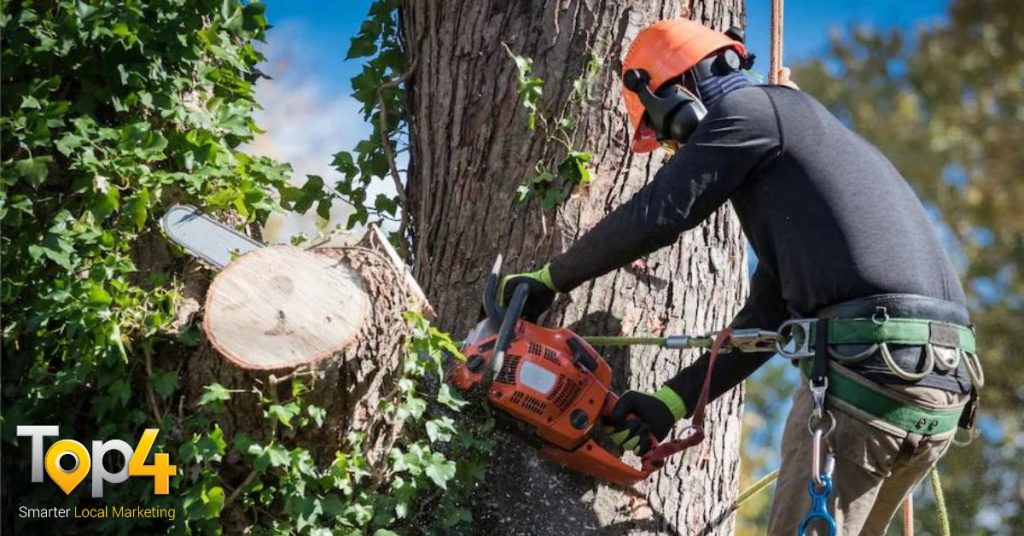The tree removal process, though it might seem easy, is actually more complicated than most people think. There are a number of steps involved, and a number of safety issues that must be addressed. If the proper preparation is not done ahead of time, it could result in someone being injured, or damage to valuable property. The best way to ensure that all the right steps are followed is to bring in an expert with the skills and experience necessary to remove the tree safely and effectively.
Steps followed when removing a tree:
Forming a Plan
The preliminary step is to set up a plan to ensure you have looked over all the pertinent details regarding the tree removal process, such as the height of the tree, proximity to surrounding structures, and which way the tree is leaning. This information will help you determine which way you want to fell the tree.
In the event of limited space, you might consider taking the tree down in chunks. Such that a 120 feet tall tree that needs to be brought down, but the largest available room is 50 feet wide would require you to take it down in three cuts of 40 feet. But before you do this, it will essential that you take off its branches, beginning from the bottom and heading upwards.
Upon beginning the tree removal process, you might encounter several factors that would either work against or sometimes to your advantage. One of the factors includes the natural lean of the tree that will determine the easiest direction to bring it down; not unless there are structures, buildings, or other immovable objects on the way, which you would not want to be damaged.
You will need to consider all the safety concerns, such as checking out the nearby power lines, structures, electrical, and plumbing to make sure none of these will become damaged during the project. Following the safety guidelines will also ensure that if the tree falls on its own, it will not hurt anyone or damage any property. You should also be able to determine the best way to bring down big branches, and ensure that your chainsaws and other tools are ready to take on the project.

Cutting
Basic techniques used for cutting include using a rope and harness to help you climb the tree and a chain saw to lop off branches as you go. Smaller branches are usually left to free-fall, but larger and more dangerous ones will require extra caution. A spar pole rigging will allow you to rig the branches, cut them, and get your partner to carefully lower them to the ground.
Whole-tree rigging technique is the most advanced form of tree cutting. In this technique, nobody goes up the tree. Rather, the tree that was taken down in huge sections with each rigged in order to be able lower them to the ground carefully. In addition, as it is suspending some feet from the ground, its branches are lopped. It is the most time-consuming and expensive tree removal method but takes care of the safety of the people around and their property.
Removing the Stump
After bringing down the branches and trunk, the final part of the tree removal process will be the stump. Several methods can be used to get rid of it, and they include:
-
- Burning it out.
-
- Killing it by injecting it with a chemical.
-
- Using a stump grinder.
-
- Digging it out.
-
- Naturally getting rid of it by removing its back and then leaving it to biodegrade naturally.





